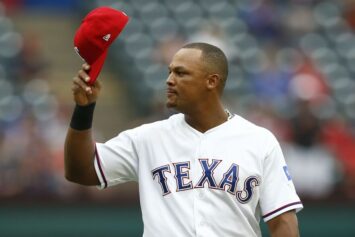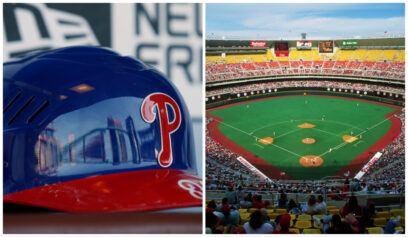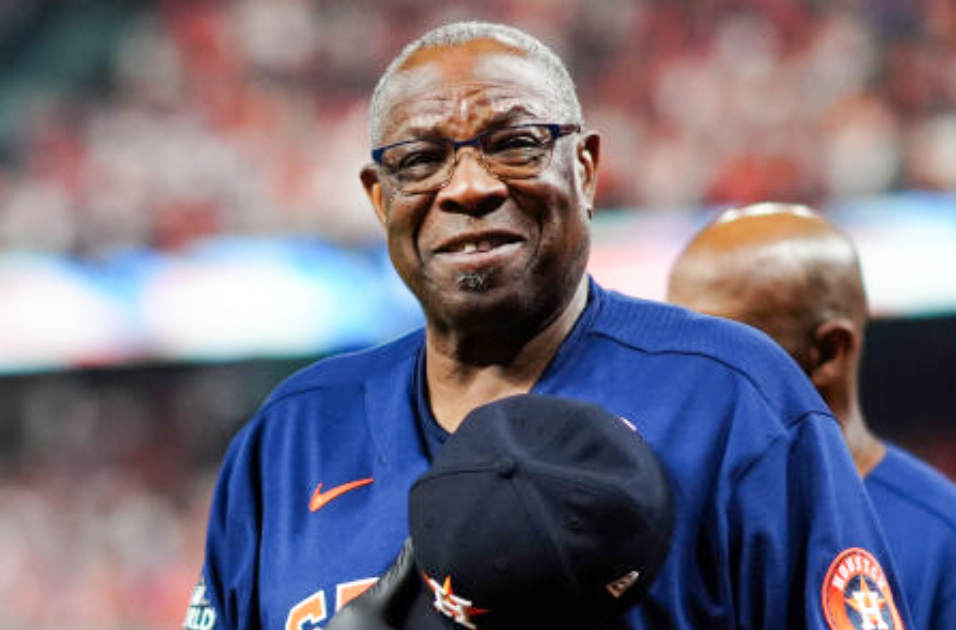This week’s class at the 2014 MLB Hall of Fame induction ceremony conjured up memories of baseball’s titans of the game. There were no political stances and symbolic shutouts . There were no disputable selections. The players and managers inducted were all legit as far as their on the field performance is concerned.
While the Hall of Fame has 306 memebers, only about half of them can be considered truly immortal players. Names that roll of your tongue and transcend generations like the lyrics to Will Smith’s “Summertime”; Mickey Mantle, Willie Mays, Hank Aaron, Babe Ruth, Frank Robinson, Cal Ripken, Lou Gehrig.
Phillies first baseman Ryan Howard was on his way to such praise as he dominated MLB pitching and displayed historic power from his Rookie of the Year campaign in 2005 to the end of the 2011 season when Howard hit the deck between the batter's box and first base, rupturing his Achillies and altering the course of baseball history forever. Howard’s whopping five-year, $125-million extension that he signed in April of 2010, was to begin in 2012.
At the time, “Big Piece” was on his way to becoming a titan as one of four players to hit at least 40 home runs and have 130-plus RBIs in four straight seasons. Babe Ruth did it seven times, from 1926-‘32. Sammy Sosa (1998-’01) and Ken Griffey Jr. (1996-’99) did it four times.
Howard’s hit an impressive 327 dingers in his 11 MLB seasons, but he hit 198 (60 percent) of those career homeruns in a four-year span. In his MVP season of 2006, Ryan had one of the greatest offensive seasons by a first baseman in history batting .313, slugging 58 homers and driving in 149 runs. The homer total is the most of any National League left-handed hitter ever, and ties Jimmie Foxx of the old Athletics for the most in Philadelphia history.
That season catapulted Howard to another level of respect as a player. Never the self-promoter, the media wasn’t in love with his reserved personality or high strikeout total, but his moon shots and the frequency with which he produced them, combined with legitimate optimism for the Phillies’ future, left no doubt that one day his journey would end up four hours away in Cooperstown, NY.
In 2007 he slammed another 47 homers and his feared presence in the Phillies lineup helped shortstop Jimmy Rollins win his own MVP award, giving the Phillies back-to-back winners. Adding excitement and increased fan interest to the Phillies success was the fact that two brothers were the faces of baseball at a time when African-American participation in the game was waning and needed a boost.
The emergence of Big Ryan Howard (whose colossal presence, uncanny and consistent power and quiet, gentleman-like dominance, in many ways reminds me of 2014 HOF inductee Frank “Big Hurt” Thomas ) had The City of Brotherly Love glued to the TV set when the funky Phillies started smoking.
Then in 2008 Howard went all out and played the only 162-game season of his career and slammed a league-leading 48 homers with 136 RBIs. More mythical numbers from the 6-foot-4, 250-pound sledge hammer who was already, indisputably, the best slugging African-American first baseman of all time; and increasingly being mentioned in the same class as his contemporary ball-obliterators like Albert Pujols and Big Papi Ortiz. It all came together for Howard and the Phillies that season. Howard, along with Rollins and Chase Utley, formed Philly’s “Big Three,” leading the city to its first World Series title since 1980. In 2009 he kept it gangster at the corner, mashing 45 homers and continuing to be an RBI machine with 141. The 40-homer streak stopped, but he still smashed a combined 64 more dingers in the 2010 and 2011 seasons.
The day after an estimated 2 million people turned out for the 2008 Phillies World Series championship parade, Ruben Amaro Jr. was promoted from assistant general manager to GM.
Two years later, when he made the Howard deal, most people felt he was securing the Phillies future. Fast forward four more years and Amaro’s job is in serious jeopardy as the trade deadline approaches on July 31st.
Entering the 2014 season, the Phillies had the third highest payroll in baseball behind the Dodgers ($235, 295, 219) and Yankees ($203, 812, 506) at $180,052, 723.
The Phillies now are near the bottom of the baseball world with a 46-60 record. That has them on pace for a 93-plus loss season which would be their worst since they were 65-97 in 2000, Terry Francona's last season as manager.
Regardless of how many errors or ninth-inning blown saves the bullpen produces, everyone goes back to the Howard deal as the beginning of the end for Philly’s ride as top dawg in the NL East.
"We just felt it was good timing for us," Amaro said after the deal. "We felt No. 1, he's one of the elite offensive players in the game. We could have waited another year and a half or so and dealt with it later on, but the fact of the matter is we decided he is that important to our organization and to our club and to our future."
If Amaro had exercised some patience, he may have had second thoughts about the huge commitment following Ryan’s injury. It was perfect timing for Howard financially. He still gets paid like a titan, although it’s obvious he can’t perform like one anymore. However, it’s had an adverse affect on a crumbling Phillies franchise and tied their hands financially.
But who could have predicted that Howard’s decline would be so abrupt and precipitous? He’s obviously in the last stages of a dwindling career. A combination of injuries and age deterioration has caused Howard’s abrupt demise. The shock of it hit Philly fans like a brick and it has taken them some time to grasp the fact that Howard wasn’t dogging it. He didn’t just suck for no reason. He wasn’t trying to play bad to hurt the city or force a trade. His mythical run has come to an end. In the same manner that Don Mattingly’s back stole the last years of a potentially great career and how Sandy Koufax’s arm troubles limited him to shooting star status as an all-time pitcher.
Or did Howard juice? His career does fit the “profile” of a PED-user.
From ages 25 to 31, he was one of the best sluggers in the game; since then, he’s been plagued by injuries and just hasn’t been getting it done.
There are no guarantees in pro sports. Each person’s body is different and greatness has its own biological clock. Howard’s power—the strength which made him an MLB beast—has simply eroded. From 2005-2008, 34% of Howard's fly balls left the yard. From 2009-2011, that dropped to 23%. From 2012-2014, it slipped to 18%.
In his prime, pitchers would throw Howard about 52% fastballs. The last three years, that's gone up to 58% as pitchers are steady fronting on his bat speed.
Howard’s never been a wiz defensively and speed has never figured into his repertoire. Howard is a big bopper. Even at this diminished stage and with manager Ryan Sandberg trying to find minor leaguers who can replace Howard, “The Mizzou Missile Launcher” has a respectable 16 homers and 62 RBIs in 100 games played. He’s also reached triple digits in games played for the first time since that fateful 2011 season. But Howard’s only hit 41 homers over the past two and a half seasons and his batting average has plummeted. That’s not the production the Phillies gave him a king’s ransom for and if they can’t find a taker for Howard, team brass is reportedly discussing just eating the rest of his mega-deal and dropping him from the roster.
Since the start of 2012, Howard has been worth -0.7 WAR (Wins Above Replacement), which is equivalent to a below-replacement-level player, and he doesn't project to improve very much from here on out. Add in the reality that he turns 35 in November and it’s safe to say Howard’s full-time playing days are over.
Maybe he can find his way in the twilight of his career as a designated hitter like Thomas, the first player elected to the Hall who spent more than half of his time as a DH. Thomas batted .301 with 521 home runs and 1,704 RBIs in a 19-year career mostly with the Chicago White Sox . He's the only player in major league history to log seven straight seasons with a .300 average, 20 homers, 100 RBIs and 100 walks.
Maybe hanging on and reaching that 400-homer plateau will be enough to get Howard into the HOF one day, but that’s not likely, according to Baseball-Reference.com’s Hall of Fame Monitor, on which 100 is a "Likely HOFer." Howard is at 98, just short. On their Hall of Fame Standards, which is more weighted toward career stats, and on which 50 is the "Average HOFer," he's at 25, well short.
The quick rise and fall of Ryan Howard makes us reflect on past greats who captured our hearts and then fell into baseball obscurity, but more importantly it draws deserved recognition to MLB greats such as this past weekend’s lauded Hall of Fame induction class featuring Thomas and pitchers Tom Glavine and Greg Maddux, for their durability and consistency and reliability—skills often found on a Hall of Fame resume.
In Howard’s case, at times he’s been regal. He’s rich and he's rocked the MLB world on several occasions, but he may never be reliable again.



